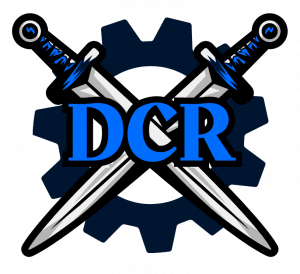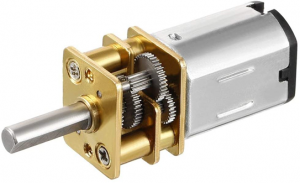Main Page: Difference between revisions
(outline) |
No edit summary |
||
| Line 46: | Line 46: | ||
== Making your first combat robot == | == Making your first combat robot == | ||
Our internal competition is for '''antweight''' robots, meaning a weight limit of 1 lb (454 g). We follow [http://sparc.tools/ the SPARC rules], which you should read (they're not long). | |||
=== | This tutorial assumes you're making the most common type of antweight design: '''two drive wheels''' and '''one weapon motor''' with a spinning kinetic weapon. You don't have to make a bot like that, but it's a good place to start. | ||
=== Components and general layout === | |||
[[File:2S LiPo battery.png|thumb|2S LiPo battery]] | |||
The basic combat robot doesn't have any code or autonomy -- it's plain remote control, like an RC car. We use the following components: | |||
# '''Lithium Polymer (LiPo) batteries''', typically of the "2S" (7.4V) variety. These connect with a yellow XT30 plug, but also have a white connector used only for charging. | |||
#* NOTE: LiPo batteries can be dangerous! Don't over-drain them, puncture them, or short them out. If you do, they may swell, become hot, and even shoot fire. Dangerous-looking batteries go in the "oh crap" metal box in the Foundry, or in the team's sand bag. | |||
# [[File:N20 brushed DC motor.png|alt=N20 brushed DC motor|thumb|N20 brushed DC motor]]'''Brushed DC motors for drive.''' We typically use "N20" model motors, which have a little integrated gearbox. | |||
=== Battery management === | |||
=== Wiring harness === | === Wiring harness === | ||
Revision as of 22:26, 26 January 2024
Welcome to the technical reference wiki for Duke Combat Robotics. If you want general information about the team, see our website.
Semester ant-weight build schedule
Students work in groups of 1-4 to build an ant-weight (1lb) combat robot, with an internal competition being held at the end of each semester. Students are strongly encouraged to keep to the following schedule to ensure they end up with a robot they can be proud of!
| Week | Fall dates | Spring dates | What to work on |
|---|---|---|---|
| late August - early September | mid January | (Pre-season: first ~3 weeks of classes) | |
| 1-2 | mid September | late January - early February | Wiring harness, "scrap bot" |
| 3-5 | late September - mid October | mid-late February | Research and design of prototype bot. Figure out overall shape, how to attach motors, etc.
SendCutSend* order #1 happens at end of week 5 |
| 6-9 | late October - early November | March | Fabricate and assemble full robot in detail, test it in the box, see what's bad, fix it, etc.
SendCutSend* order #2 happens at end of week 9 |
| 10-12 | mid-late November | early-mid April | Do test skirmishes with your robot, refine as needed. |
| 13 | early December | late April | Competition! Typically the first Saturday or Sunday of undergrad reading period. |
* SendCutSend is a commercial service that offers precision cutting of many materials. We especially use them to order laser cut AR500, an armor plating steel suitable for combat robot weapons. See technical tutorials below for details.
Making your first combat robot
Our internal competition is for antweight robots, meaning a weight limit of 1 lb (454 g). We follow the SPARC rules, which you should read (they're not long).
This tutorial assumes you're making the most common type of antweight design: two drive wheels and one weapon motor with a spinning kinetic weapon. You don't have to make a bot like that, but it's a good place to start.
Components and general layout
The basic combat robot doesn't have any code or autonomy -- it's plain remote control, like an RC car. We use the following components:
- Lithium Polymer (LiPo) batteries, typically of the "2S" (7.4V) variety. These connect with a yellow XT30 plug, but also have a white connector used only for charging.
- NOTE: LiPo batteries can be dangerous! Don't over-drain them, puncture them, or short them out. If you do, they may swell, become hot, and even shoot fire. Dangerous-looking batteries go in the "oh crap" metal box in the Foundry, or in the team's sand bag.
- Brushed DC motors for drive. We typically use "N20" model motors, which have a little integrated gearbox.
Battery management
Wiring harness
Scrap bot
Common robot designs
Fabrication tips
TPU
Weapon hubs
Advanced material selection
Meta-information: About this Duke MediaWiki
Access: This wiki uses the same underlying software as Wikipedia, mediawiki. To edit, you need to login (upper right of the page) and to have been granted edit access. To request edit access, ask Tyler Bletsch to add you. All club members are eligible to get wiki access; just ask. Note to Tyler: You can edit who has wiki access at your policy group at this link. Details here here.
Editing: The various edit buttons bring up different editors, but all do the same thing. Use your favorite.
Making pages: Link to a page with a new name, then go to that empty page and edit it to add stuff there.


